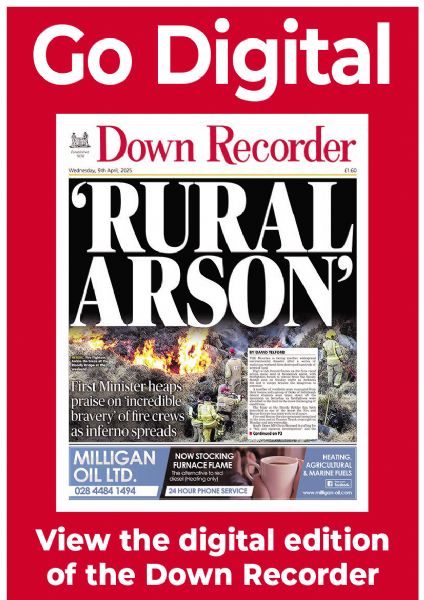Horse racing traced back to Downpatrick 300 years ago
Horse racing traced back to Downpatrick 300 years ago
19 June 2019
NOW, when folk think of Downpatrick, they think of many things: St Patrick, history, great pubs, fantastic veterinary care. However, I doubt many think that it is the cradle of horse racing, but it is.
We do of course have a famous racecourse, which has just hosted a festival of racing as part of the DownTime Summerfest.
Some of you, dear readers, may even know that there is an earlier racecourse in Downpatrick — at Old Course Road. So racing has been going on for centuries in our beautiful corner of the world. And we have also played a vital role in the foundation of the Sport of Kings.
The breed of horse associated with modern horse racing is the thoroughbred. A mere glance is enough to tell even the casual observer that the thoroughbred does not look like other horses.
When compared to a pony or carthorse, the thoroughbred is leaner, taller and sleeker. In fact, these horses are perfectly designed for racing. They have big lungs, a big heart and long, slender legs that can move swiftly.
They also need special care when compared with native breeds. They have thin hair coats and so need to wear rugs or live in stables in bad weather. They need special food to give them energy to race. So these features tell you that the ancestor of the modern thoroughbred came from somewhere hot — from the desert, in fact. The ancestor of our racehorses is from Arabia.
Back in the 17th century, horses were bred for work and war, not pleasure. Officers prized horses that were fast to get them in and out of battle and keep them alive. By this time, the medieval charger of knights — the destrier — was out of fashion. They were too slow and cumbersome, and soldiers no longer wore heavy suits of armour.
So the horse evolved through selective breeding to become fleet of foot. There were no horses faster than the Arabian, which was specially bred to become bigger and faster than its wild cousin. The armies of the Ottoman Sultan developed special studs to create this new war machine.
In 1683, one of these fine stallions, known as the Byerley Turk, found himself outside the gates of Vienna. The Ottoman Sultan wanted to capture the imperial capital of the Holy Roman Empire, an objective he failed to achieve when the Polish King John III Sobieski led the greatest cavalry charge in history to defeat the Ottoman forces.
The Byerley Turk was captured and eventually brought to England, finding himself in the ownership of one Captain Byerley.
His adventures were not over though. Recognising a fine animal, Captain Byerley adopted the Turk as his war horse. In 1689 he
was called to Ireland to fight for King William and in 1690 he fought at the Battle of the Boyne. Indeed, Captain Byerley later attributed his surviving that battle to the swiftness of his favourite war horse.
After the battle, the Turk was entered in a horse race — in Downpatrick. Of course, he went on to win that race and go on to be one of the most famous horses in history. The Flying Horse housing development to the east of Downpatrick is named after this famous race.
The remarkable career of the Turk continued — and now we come to his ultimate destiny. He was put out to stud in Yorkshire. His pedigree was highly prize and he became the first of only three foundation sires of the modern thoroughbred breed.
Genetic testing has revealed it is his DNA that is the most common in all modern racehorses. His progeny are successful right to this day including names such as Dr Devious, Ahonoora and Indian Ridge.
And it all started with a fateful race in Downpatrick over 300 years ago. Needless to say, if Downe Vets had been around then and caring for his veterinary needs, we feel he could have achieved more.


